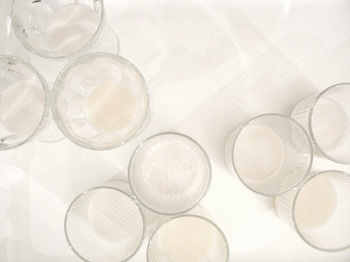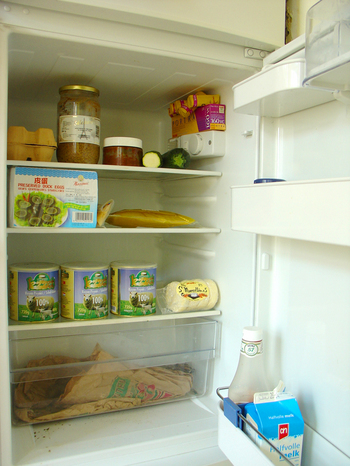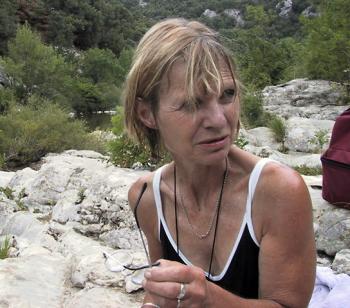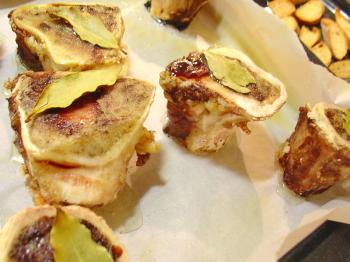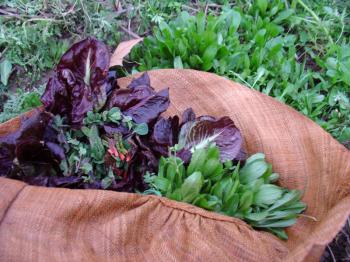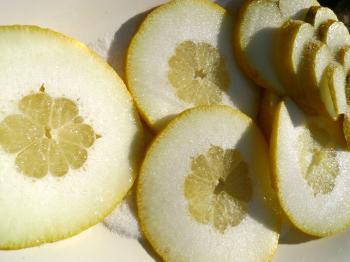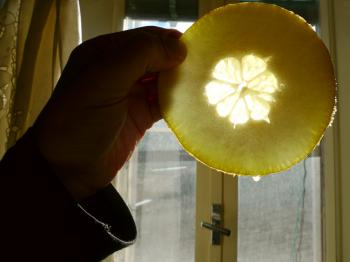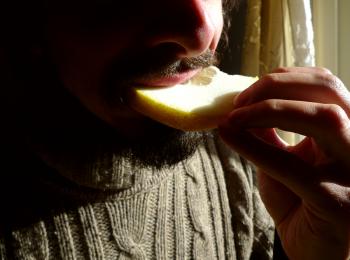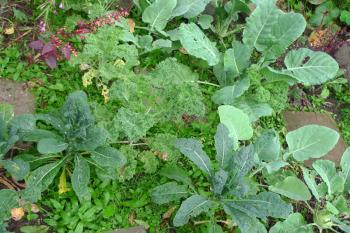The citron,
Il cedro,
Sunshine of my resolutions
January 12, 2011
To encourage success in completing difficult, unrealistic New Year’s resolutions (like daily blogging and yoga practice), I tend to spike my list with easily attainable, readily achievable, things that happen anyway. Usually these resolutions occupy the esoteric slash culinary realm, like learning to brew beer (2011), or the domestic slash procrastination realm, like learning to knit socks (2010: time consuming yet enlightening). Sometimes my resolutions even occupy a strange category of ancient and exotic craftsmanship, no longer of any real value in the modern world. (Yes, in 2008 I did in fact improve my handwriting, but only for that specific year, and in 2009 I resolved to quit this archaic practice forthwith.)
A recurring favourite, easy as falling off a horse, is the resolution to taste each new fruit and vegetable that crosses my path, somehow still unbeknownst to me. Not even two weeks into the new calendar and I’m already done. This year it’s the citron, bought from a roadside vendor here in Sicily. A bit of rooting around and I discovered that this variety is the Diamante not deemed fabulous enough for use as an etrog but delicious none the less.
The citron (citrus medica) has in the past been popular for all manner of pharmaceutical, beveragological, confectionary, and perfumerical uses, here il cedro is thinly sliced and sprinkled with white sugar, which draws out the sweet and sour juices of pith and pulp. After allowing time to marinate a bit you eat the slices for dessert. It’s the combination of the green melon-like fleshy pith, the citron’s ragion d’essere, with the hyper-aromatic essential oil infused outer rind, and the juicy sweet and sour pulp, that makes it such a refreshing pleasure to eat. Our friends here keep telling us that it’s heavy on the digestion, but I am learning to occasionally disregard the questionable culinary authority of vegetable torturers and obsessive compulsive pasta eaters.
And inadvertently it seems that I’ve made a blog entry, though I dare not utter which category of New Year’s resolution that this action occupies. 2010 was an incredibly busy year spent initiating the project of my dreams in the realm of urban agriculture. 2011 promises more of the same, but I begin yet again, with the best of intentions to afford myself some time each week to reflect and write about the work of URBANIAHOEVE; Social Design Lab for Urban Agriculture, which is hopefully interesting to the remaining readers of this blog.
Happy New Year!
debra at 13:51 | Comments (8) | post to del.icio.us
Pissin’ about, the re-blog…
September 16, 2010
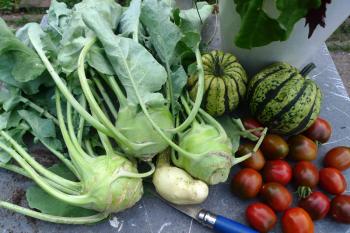
Didn’t go to the farmers’ market this Saturday
(First published 13 September, 2009 under the title: Not piss-poor anymore)
One of the reasons I gave my Amsterdam kitchen garden the name Slim Pickins was to show that even a postage stamp-sized garden with a relatively little crop could serve up a surprising amount of food. But the real reason was that it had piss poor soil and I always thought the garden looked scrawny. I used to blame the slow rate of growth on the location, but visits to many local organic farms and especially to the nearby school gardens had made it painfully clear that the anemia of my produce had nothing to do with living so close to the Polar Circle. Well maintained school gardens right in the middle of the city were lush because they had great soil.
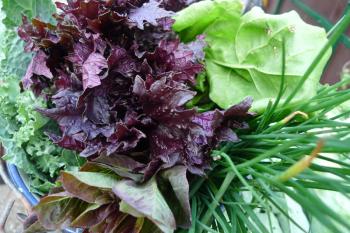
I’ll be chewing this cud all week
In the hope of increasing soil nutrients, I grew the green manures that were hugely successful in the Occitanian kitchen garden. But at Slim Pickins, the alfalfa, vetch, fenugreek and phacelia didn’t burgeon and produce huge mats of biomass like they did in the south, in a large part due to the blasted ground conditions. I’d been thinking about asking a farmer I knew if he’d bring me a load of composted manure, but I never ended up going ahead with this because I just don’t like the idea of importing large volumes of additives from afar. Searching for a solution closer to home, I considered making a worm composter and biking the castings over one recycled yoghurt container at a time, but there were already so many worms casting away in the garden that this plan just seemed bass-ackwards.
By the time I had returned to my garden in August I had basically resigned myself to a mediocre harvest. But two weeks ago I starting bumping into links about fertilizing with urine. I knew that pee was nutrient rich, balanced in nitrogen, potassium and phosphorus, and I had no problem with it in the animal manure. Why it hadn’t occurred to me to try using my own I’ll just chalk up to a deeply ingrained societal taboo against humanure. One YouTube video and 3 articles later and suddenly urine fertilizer seemed like a painless experiment with a material both abundant and free. I decided to give it a go. I might have even been giddy, biking over all those recycled yoghurt containers filled with pee.
Following instructions, in a big bucket I diluted (DILUTE! DILUTE! OK!) 1 part fresh pee to 10 parts Amsterdam tap water, gave it a stir and poured it on my soil, trying to avoid splashing the leaves. It’s possible that there was some more giddiness at this point. Recycled yoghurt containers empty, I left the garden and returned one week later.
AND…
WOWWY!
KAZOWWY!
And now with jazz hands!
Pity I didn’t make scientific-style before and after pictures but you’ll have to believe me when I say that the results were striking. In one week’s time all of the plants suddenly produced a great deal of leaf, and the leaf-colour seemed to have deepened considerably. All of the plants, but especially the climbing ones (calabas and hokkaido), appear to have undergone an enormous growth spurt. This happened during a waning moon, and with ever cooling temperatures. At home in the window box my spindly vervain and green shiso that had always resembled bonsais, suddenly filled out in their pot.
Possibly you are thinking, “Hey Nut-Job, OY VEY, what about the SMELL, what about the TASTE?” I can report that there is no urine or amonia smell at all, even on my indoor plants. (When I saw the difference in just a few days on the herbs, I had to try it indoors.) Some of the net-lit studies suggest that insects (like aphids) can taste the difference and stay away. I can’t taste … any… urine. Well, how do you know what urine tastes like? I don’t know, how do you don’t? What? I don’t know. Shut up.
And to get back to the reason I did this in the first place, the Slim Pickins kitchen garden produced a two bike-bag bumper crop and it looks like next week will be the same. I had such an abundant harvest (chard, kohlrabi, kale, cavalo nero, various leafy herbs, tomatoes, chives) that I didn’t need to go to the Farmers’ Market. Although I don’t think the folks at Organic Farm the Knotwilg will have to get another day job, the results in my garden after just one week of urine fertilizing are impressive.
In case you were planning on coming over for a nibble of some Slim Pickins goodness, I’m harvesting on Saturdays and fertilizing on Mondays. You’ll probably pray for rain.
-
Urine Charge Every day we urinate away nutrients–nutrients that could grow food, fiber, flowers and even fuel! Human urine contains nutrients in the form of nitrogen, which plants love, and it’s usually pathogen free.
Online version of the Humanure Handbook by Joseph Jenkins, humanure expert
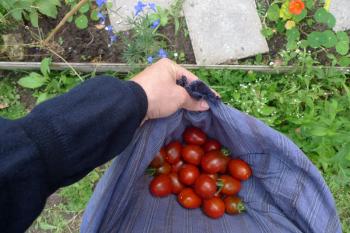
The tomato that keeps on giving
debra at 19:01 | Comments (6) | post to del.icio.us
DIY Mmmmuseum of
Oven Typologies
June 25, 2010
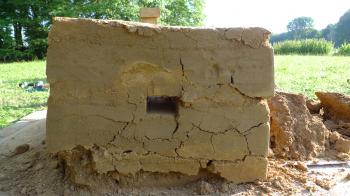
Our first tamped earth oven lacks some structural-integrity
Hey there lovers… of food-system infrastructure, this weekend (June 26 & 27) from 13.00h we will pilot the DIY-Mmmmuseum of Oven Typologies (Dutch acronym is DHZMOT) at Art at the Pool during the Sloterplas Festival in Amsterdam. (Links are in Dutch, unfortch.)
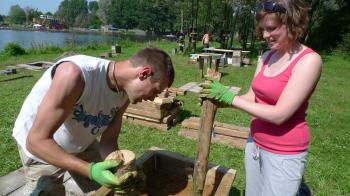
Tamp 500 kilos of earth into oven mold
DHZMOT = Ovens, ovens, ovens, and more ovens…
Ovens made of tamped earth, underground ovens, solar ovens made from wasted umbrellas and/or pizza boxes. Ovens in and for the public space ľ you design Ĺem, you build Ĺem, we use em! The DHZMOT is an always in development, ever-growing collection of manuals and materials with which tweeners of all ages can make their very own. Simmered sous vide, blackened, smoked or molten, smack of lip and finger lick, attention absorbing, at the very least transforming, producing together a cuisine vÚgŔtal in and on the ovens will afford the necessary trial by fire.
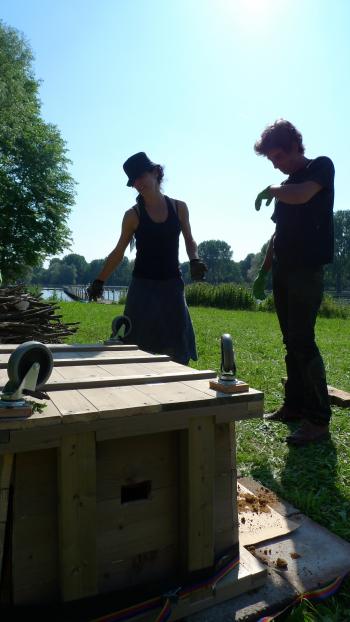
Do a little dance for good luck, spill some beer
The DIY Mmmmuseum of Oven Typologies is one of five projects in and around the outdoor swimming hole at the Sloterplas Festival event Art at the Pool. We are situated on an island accessible by a floating waterwalkway. Aside from meandering, lounging and soaking up rays, come and enjoy this opportunity to pilot the DHZMOT with us.
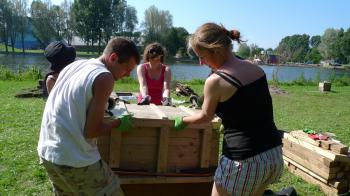
Release 500 kilos from the mold, piece o cake
The DIY Mmmmuseum of Oven Typologies is a project of URBANIAHOEVE, Social Design Lab for Urban Agriculture. Setting up this foundation and getting funding for the projects has occupied most of what used to be my time for blogging. (Which is why the foundation’s project’s are generously supported by Stichting DOEN, Fonds BKVB, Koers Nieuw West and Amsterdam Fonds voor de Kunst.)
URBANIAHOEVE is about developing new models for food-system infrastructure within the public space. We believe in setting up public access food infrastructure like open kitchens and outdoor oven installations that facilitate group cooking, group harvesting community jam sessions and the Int’l month of sauerkraut. THe DIY Mmmmuseum of Oven Typologies is a way of getting used to cooking ad hoc in the public space.
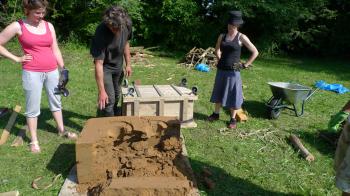
Dang! And we’d even kissed the earth!
DIY Mmmmuseum of Oven Typologies Island
Sloterparkbad
El Presidente Allendelaan 3
Amsterdam
Sat/Sun June 26 & 27, 2010
from 13h until youĺre thoroughly fried
Saturday night special guests: Caspian Hat Dance will blow us away acoustically with original and traditional Romani music, Klezmer, misbehaved village wedding music, Southern Italian Pizzica, and pretty songs sung in Romani on Bolivian mountaintops. Your high heels will be of no use to you at all.
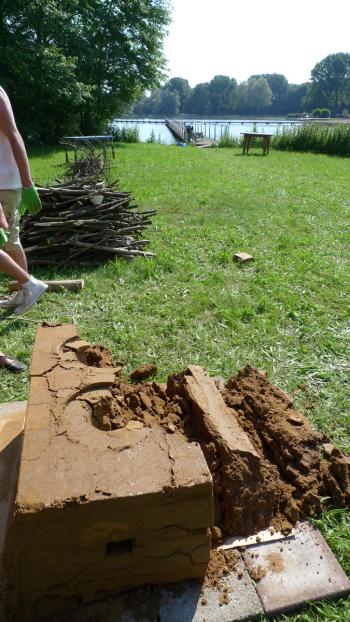
2nd attempt: Walk away in disgust…
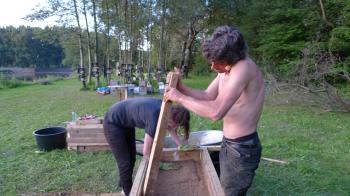
The 3rd attempt at the tamped earth oven hasn’t yet been released from the mold. Come to the DIY Mmmmuseum of Oven Typologies this weekend and see what happened!!!
debra at 15:35 | Comments (0) | post to del.icio.us

